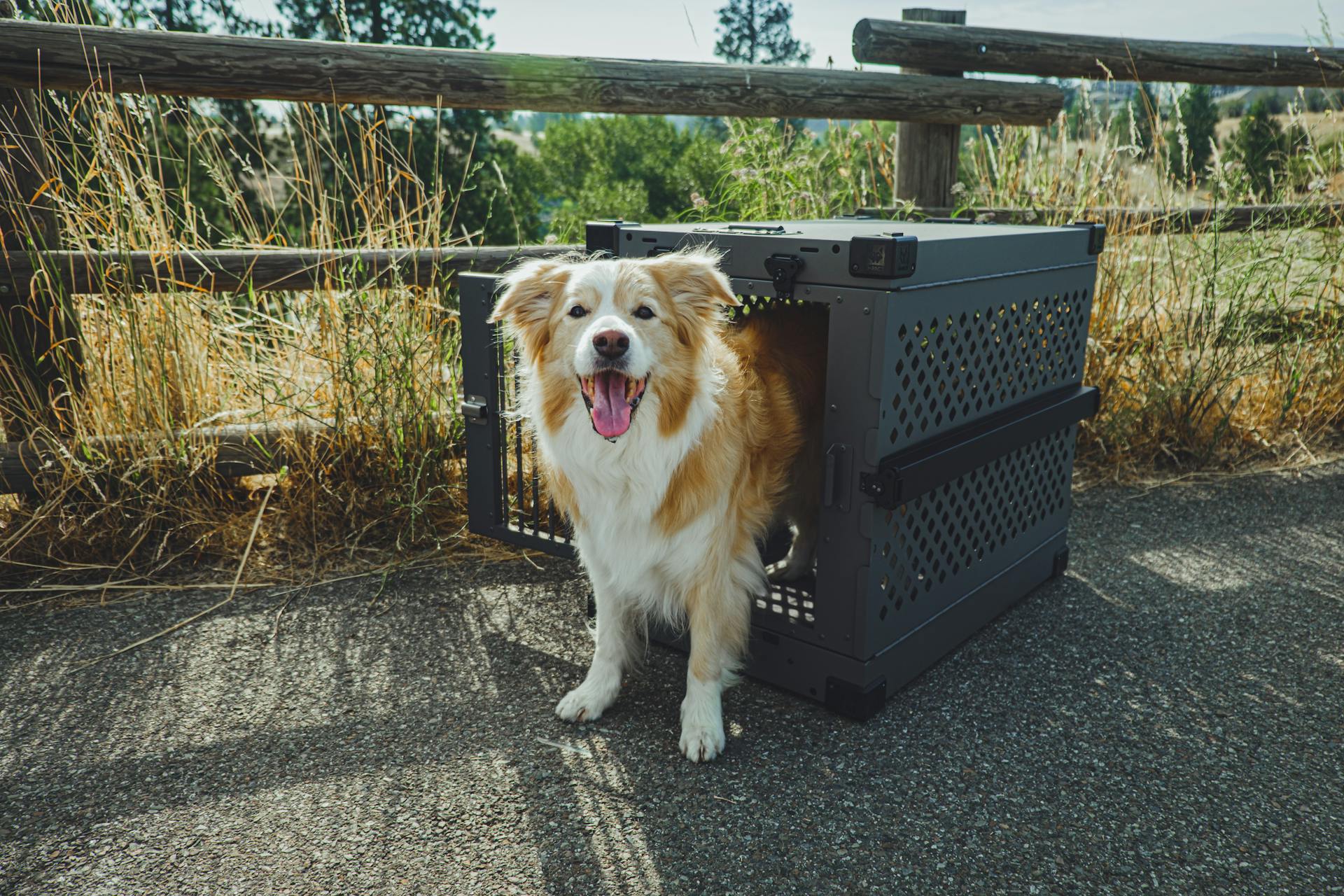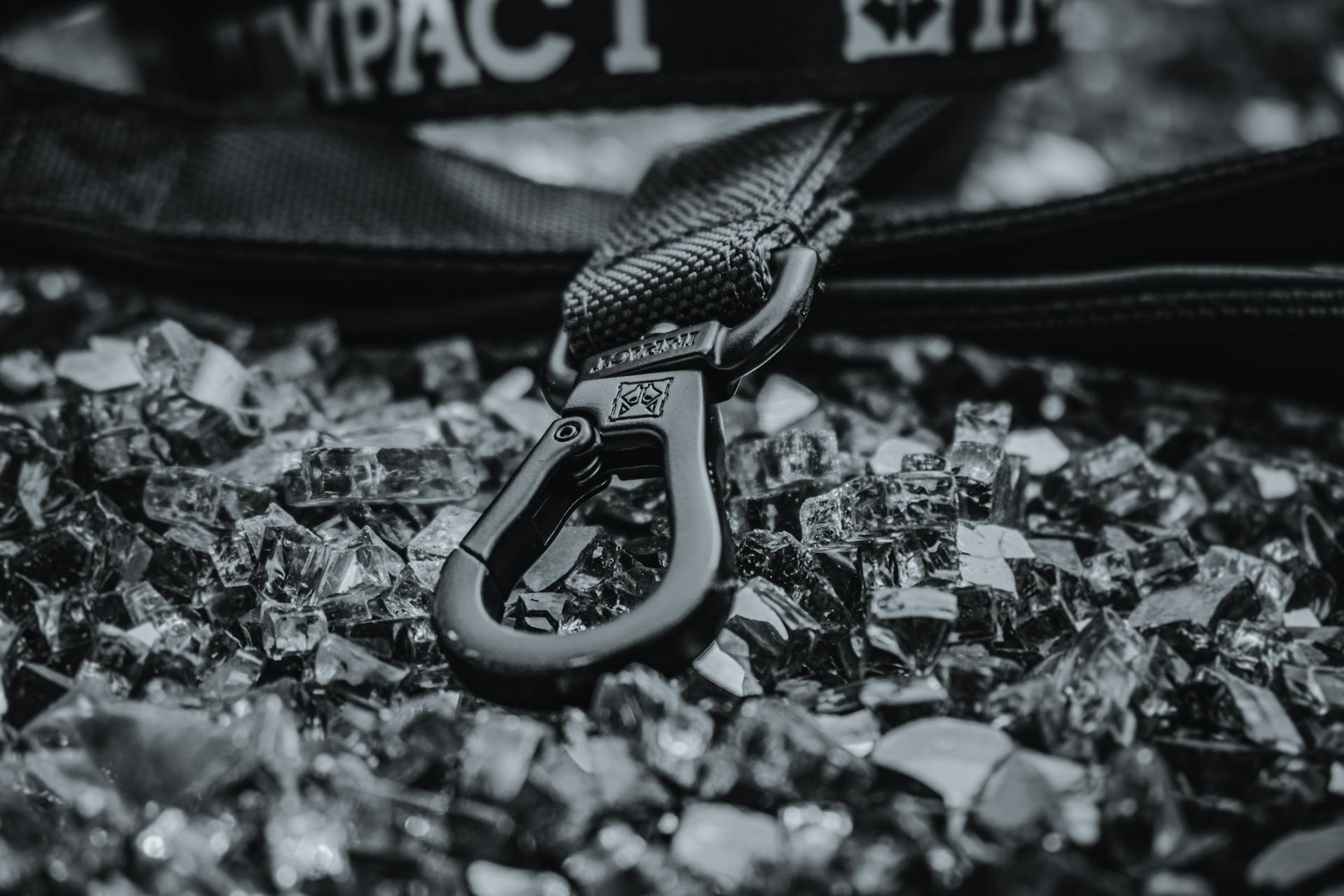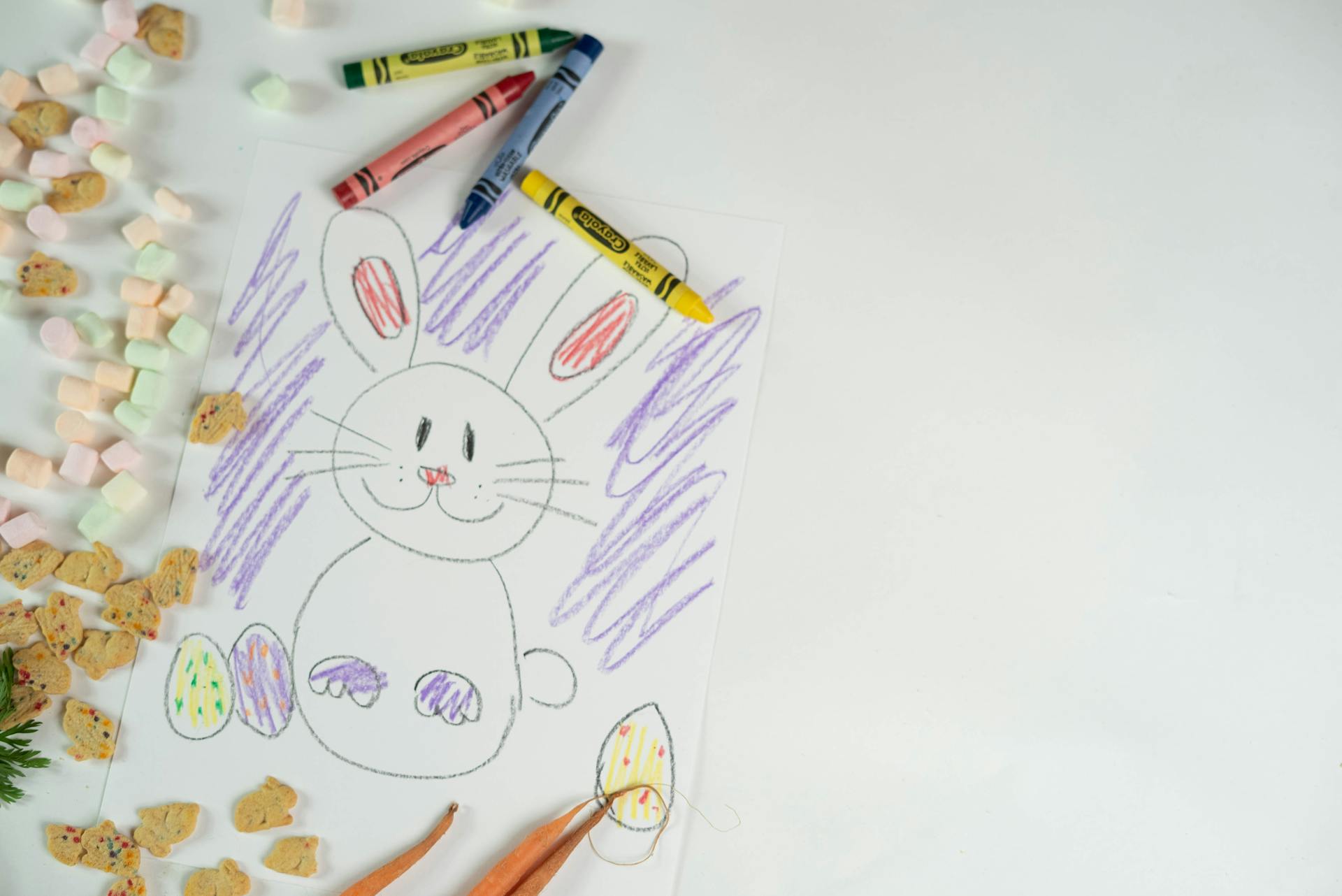
Crate training is a great way to establish good habits and prevent unwanted behaviors in your puppy or dog. Crate training should begin as soon as you bring your puppy home, ideally between 8 to 12 weeks old.
At this age, puppies are naturally inclined to follow their instincts and seek a den-like environment to feel safe and secure. Crate training taps into this instinct, allowing your puppy to establish a sense of comfort and security.
Your puppy's crate should be large enough for them to stand up, turn around, and lie down comfortably. A general rule of thumb is to choose a crate that is at least 6 inches longer than your puppy's length.
Before Training
Crate training doesn't happen overnight, and introducing your dog to a crate should take place over a long period of time, several weeks or more.
Young dogs can only hold their bladder and bowels for a few hours, not an entire workday or overnight. This means you need to be realistic about their abilities and not expect them to go the full day without needing to potty.
Broaden your view: How to Train Your Dog Not to Bark at Strangers?
Use another space to safely house your dog for extended periods when you're unavailable, such as during the workday or at night. This could be a small bathroom, kitchen, gated-off area of a room, or an ex-pen containing the dog's crate, with door removed.
The key is to create a dog-safe environment that allows your dog to sleep in her crate but potty on an approved, easy-to-clean surface. This might be newspaper, pee pads, or even a square of sod in a cat litter box.
To determine the number of hours your puppy can be crated, use their age in months plus one. For example, if your puppy is 4 months old, they can hold it for 5 hours.
The Training Process
Start by giving your dog plenty of time to feel comfortable inside the crate before closing the door and leaving them alone for the first time. This can take just a few minutes or as long as several days.
Drop treats around the crate, just inside the door, and then gradually all the way inside to encourage your dog to enter. If she doesn't go all the way in at first, that's fine – don't force her to enter.
The goal is for your pup to have a positive association with being inside the crate, so repeat this experience until your dog will calmly walk into the crate to get a treat.
To create pleasant associations with the crate, start feeding your dog regular meals near the crate for a while. Place the dish a little more toward the back of the crate each time to help your dog get used to eating in the crate.
A good rule of thumb is to start with short periods of crating, such as 10 minutes, and gradually increase the duration over time. If your dog begins to whine to be let out, you may have increased the duration too quickly.
Here's a rough guide to help you determine the right crating duration for your dog:
Remember, every dog is different, so be sure to monitor your dog's behavior and adjust the crating duration accordingly.
To help your dog feel more comfortable in the crate, try feeding their meals inside the crate with the door open. If they're reluctant to eat inside, place the bowls next to the crate for a few meals, then just inside of it, and finally at the back of the crate.
As you progress with the training, you can start confining your dog to the crate for short periods while you're home. Give them a command to enter the crate, such as "kennel up", and reward them with a treat when they do.
Training My Dog
Crate training is a great way to help your dog feel safe and secure, but it's essential to start at the right time. Typically, you can begin introducing your puppy to the crate from 8 to 12 weeks old, but it's crucial to remember that every dog is different and may need more time to adjust.
Puppies, especially, need time to feel comfortable in their crate, so don't rush the process. Spend as much time as you need on each step to ensure your dog feels content and stress-free. This will lay the foundation for a lifetime of looking forward to their crate.
One of the secrets to kennel training success is giving your dog plenty of time to feel comfortable inside the crate before closing the door and leaving them alone for the first time. This means you should start by keeping the crate door open and letting your pup explore it at their own pace.
You can entice your dog with a busy toy stuffed with treats or simply toss a treat inside and praise your dog when they go in to eat it. Remember, the goal is for your pup to have a positive association with being inside the crate, so stay happy and upbeat as your puppy explores the crate.
When it comes to feeding your dog, it's a good idea to place their meals in their crate with the door open, making it a positive spot. If they're reluctant to eat inside, you can start by placing the bowls next to the crate for a few meals, then just inside of it, and finally, at the back of the crate.
Here are some general guidelines for crate training:
Keep in mind that these are general guidelines, and you should adjust the crate duration based on your dog's individual needs and age. It's also essential to remember to give your dog plenty of potty breaks and take them outside immediately after letting them out.
If your dog is still hesitant to enter the crate, try giving treats to reward small successes, like if they glance at it or take a step towards it. These small successes will encourage your pup to keep it up!
Managing Whining
Before you put your dog in the crate, ensure that all of their needs are met, including food, water, elimination, and mental as well as physical enrichment.
If your dog whines or cries while in the crate, it may be difficult to decide whether they are whining to be let out of the crate or if they have any unmet needs.
If a dog is distressed in the crate, they may try and force the crate open, which can be dangerous and even lead to injury. Let your dog out of the crate immediately if you think it may be distress.
If the whining is not because of distress or any unmet needs, you can initially ignore it. Your dog may stop if they're just testing to see if they'll be let out.
If the whining continues after you've ignored it for several minutes, you can repeat the phrase your dog has associated with going outside to eliminate. If they respond and becomes excited, take them outside.
If you are convinced that your dog does not need to eliminate, eat, or drink, the best response is to ignore the whining completely. Most attempts at punishing the behavior actually end up inadvertently reinforcing it because the dog is getting attention from you.
During the process of ignoring whining, expect it to get worse before it gets better. If the problem becomes unmanageable, you may need to restart the crate training process from the very beginning.
Here are some things to keep in mind when dealing with whining:
- Give your dog a potty break before putting them in the crate, and don’t forget to take them outside immediately after letting them out.
- Don’t crate your dog for too long. Doing so might force them to soil inside.
- If your dog whines in the crate for the first few minutes after a potty trip, it's likely just settling in.
- Avoid using the crate for punishment, as this can create a negative association for your dog.
Dog Supplies
To crate train your dog successfully, you'll need to gather the right supplies. A simple crate mat is a good choice for pups still acclimating to the crate, as it's easy to clean and won't absorb urine.
You'll also want to have some tasty treats on hand, like Wellness Soft Puppy Bites Lamb & Salmon Recipe Grain-Free Dog Treats, to help reinforce the idea that good things happen inside the crate.
Busy toys can be a lifesaver for dogs with tons of energy, like puppies. Treat-stuffable toys like the KONG Classic or a West Paw Zogoflex Small Tux Tough Treat Dispensing Dog Chew Toy are great options, but make sure to test their durability before leaving your dog alone with them.
Here are some specific supplies you'll need to get started:
- Bedding (a simple crate mat is a good choice)
- Treats (small savory treats like Wellness Soft Puppy Bites)
- Treat-stuffable toys (like the KONG Classic or West Paw Zogoflex)
Selecting a Container
Selecting a container for your dog is a crucial step in creating a comfortable and safe space for them to relax and play. You'll need to consider the type of container that will work best for your pup.
There are two main types of containers: hard plastic airline-style crates and wire crates. Wire crates offer more versatility when it comes to door placement and customizing the size of the interior with a divider.
When choosing a container, size is a top priority. Your dog's container should be large enough for them to stand up, turn around, and lie down comfortably. Avoid oversized containers that can derail the potty-training process by giving your pup too much space.
Here are some key features to consider when selecting a container:
Remember, a container that is too large can be just as problematic as one that is too small. Pet parents of puppies can anticipate their dog's growth by purchasing the largest sized container their dog will need when they're fully grown.
Other Training Supplies
You'll need some extra supplies to make crate training a success. A simple crate mat is a good choice for pups still acclimating to the crate, like the Frisco Micro Terry Dog Crate Mat.
Treats are essential for the crate introduction process. Small savory treats, such as Wellness Soft Puppy Bites Lamb & Salmon Recipe Grain-Free Dog Treats, help reinforce the idea that good things happen inside the crate.
Busy toys can help dogs with tons of energy, like puppies, chill out in the crate. Treat-stuffable toys like the KONG Classic or a West Paw Zogoflex Small Tux Tough Treat Dispensing Dog Chew Toy are great options, but be sure to test their durability first.
If you choose a toy with a treat compartment, make sure it's not too jam-packed for your pup's level of toy unpacking expertise. Some pups can get frustrated if the toy is too difficult to figure out.
Here are some examples of toys and treats you can use for crate training:
- Frisco Micro Terry Dog Crate Mat
- Wellness Soft Puppy Bites Lamb & Salmon Recipe Grain-Free Dog Treats
- KONG Classic
- West Paw Zogoflex Small Tux Tough Treat Dispensing Dog Chew Toy
Potential Problems
Crate training isn't a one-size-fits-all solution, and it's essential to use it correctly to avoid problems. If your dog is crated all day while you're at work and then crated again all night, he's spending too much time in too small a space.
Puppies under six months of age shouldn't stay in a crate for more than three or four hours at a time, as they can't control their bladders and bowels for longer periods. This is crucial to prevent accidents and discomfort.
If your dog whines or cries while in the crate at night, it may be difficult to decide whether he's whining to be let out of the crate or whether he needs to be let outside to eliminate. Ignoring the whining is often the best course of action.
Yelling at your dog or pounding on the crate will only make things worse and create more problems. Instead, try to ignore the whining and see if it stops on its own.
Benefits of Dog Training
Starting dog training early can have a significant impact on your dog's behavior and overall well-being.
Puppies as young as 8 weeks old can start learning basic commands and good behavior, making them more likely to grow into well-behaved adult dogs.
Consistent training can reduce the risk of unwanted behaviors like barking, chewing, and digging by 70%.
Training your dog can also strengthen your bond with them, making it easier to communicate and understand each other's needs.
Housebreaking can be achieved in just a few weeks with proper training and patience, making it a worthwhile investment of time and effort.
Main Types
Let's talk about the main types of crates you can use for crate training. The most popular one is the wire crate, also known as the Life Stages Crate, which has a divider that allows it to grow with your dog.
The wire crate has several advantages, including being the most versatile, having a divider to change the size of the crate, and folding down easily for storage and travel.
Here are some key features of the wire crate:
- Most versatile.
- Divider to change the size of the crate to grow with the dog.
- Folds down for storage or transport.
- Looks the most like a cage.
- Needs towels or blankets on the outside to make cozy.
The plastic Kennel is another popular option, but it has some drawbacks. It's already enclosed, which can be nice for some dogs, but it doesn't fold down nicely, making it bulky to store and travel with.
Some key features of the plastic Kennel include:
- Already enclosed and snug.
- Airport approved.
- No way to adjust the size for growing puppies.
- Can be bulky to travel with.
Lastly, there's the travel crate or soft-sided crate, which is incredibly light and folds down easily. However, it doesn't have the life stages option and can be chewed through by puppies and big chewers.
Dog Care and Housing
Crate training can be a lifesaver for many dog owners, but when to start is a common question. You should begin crate training your dog as soon as you bring them home, ideally when they're around 8-10 weeks old.
The goal is to make the crate a comfortable and safe space for your dog, not a place of confinement. To achieve this, start by placing treats inside the crate to entice your dog to enter voluntarily. This process may take a few minutes or several days, so be patient.
A quiet corner of the living room or dining room is an ideal location for the crate, as it allows your dog to rest while still being part of the household. Avoid placing the crate in a garage or basement, as this can isolate your dog.
To speed up the crate training process, remember to give your dog a potty break before putting them in the crate, and take them outside immediately after letting them out. This is especially important for puppies, whose "hold time" is still developing.
Here's a rough guide to help you estimate your puppy's "hold time":
Keep in mind that this is just a rough estimate, and your puppy's individual needs may vary. Always prioritize their comfort and safety.
Feeding your dog's meals in their crate with the door open can help make it a positive spot. If they're reluctant to eat inside, place the bowls next to the crate for a few meals, then just inside of it, and finally at the back of the crate.
Frequently Asked Questions
Should I put my 8 week old puppy in a crate at night?
Yes, crate training is recommended for 8-week-old puppies at night to ensure their safety when unsupervised. Crate training provides a comfortable and secure space for your puppy to rest and recharge.
Can I start crate training at 12 weeks?
You can start crate training your puppy before 12 weeks, but it's not a strict rule. Crate training can be done at any age, but starting early may make the process easier.
Can you crate train a 1 year old?
Yes, you can crate train a 1-year-old dog, but it may require a bit more patience and effort than training a puppy
Sources
- https://www.animalhumanesociety.org/resource/crate-training-your-dog-or-puppy
- https://be.chewy.com/how-to-crate-train-a-puppy-a-step-by-step-guide-from-an-expert/
- https://paws.org/resources/how-to-crate-train-your-dog/
- https://www.playtimepaws.com/crate-training-how-why/
- http://www.sadiesrulesk9training.com/blog-posts/2019/6/29/how-to-crate-train-your-dog-and-why-you-should
Featured Images: pexels.com


